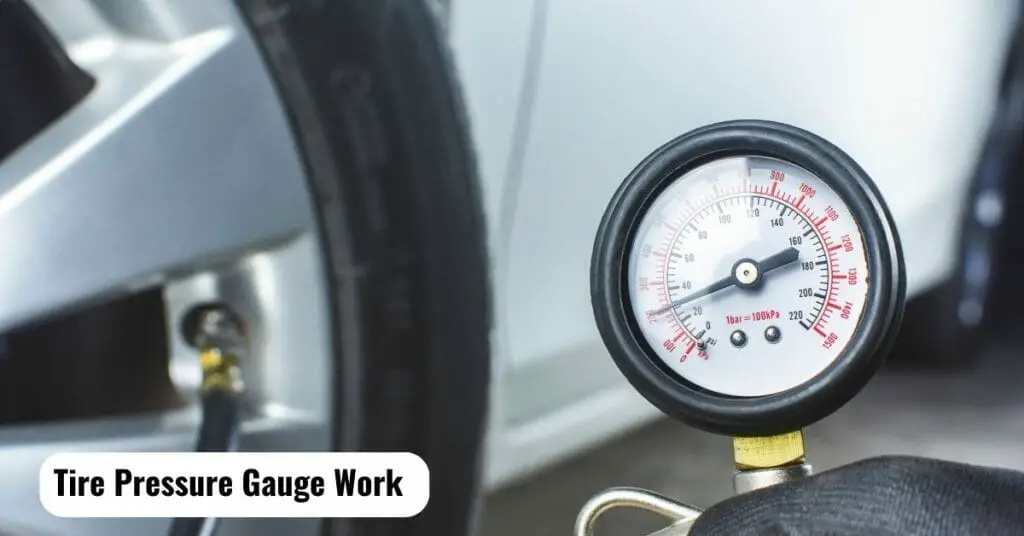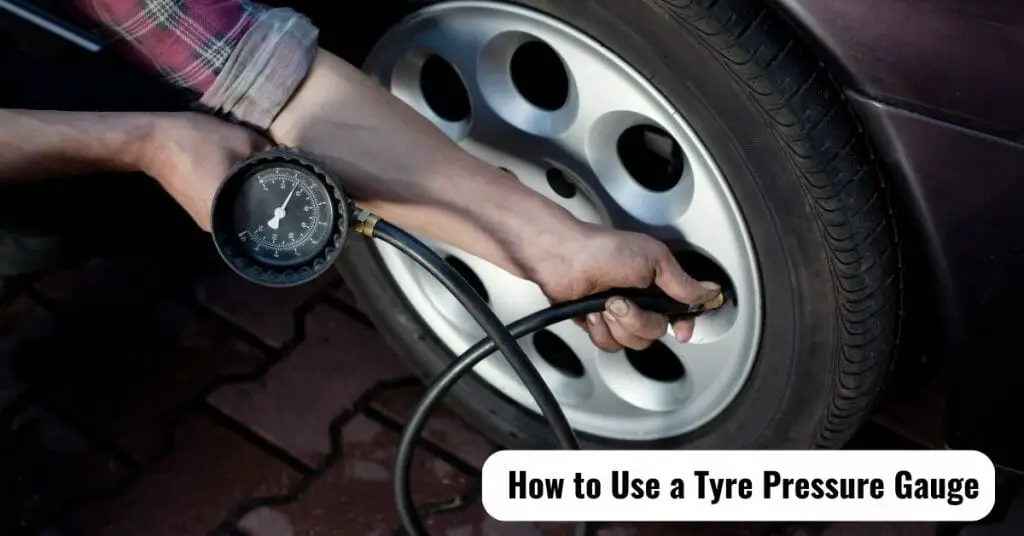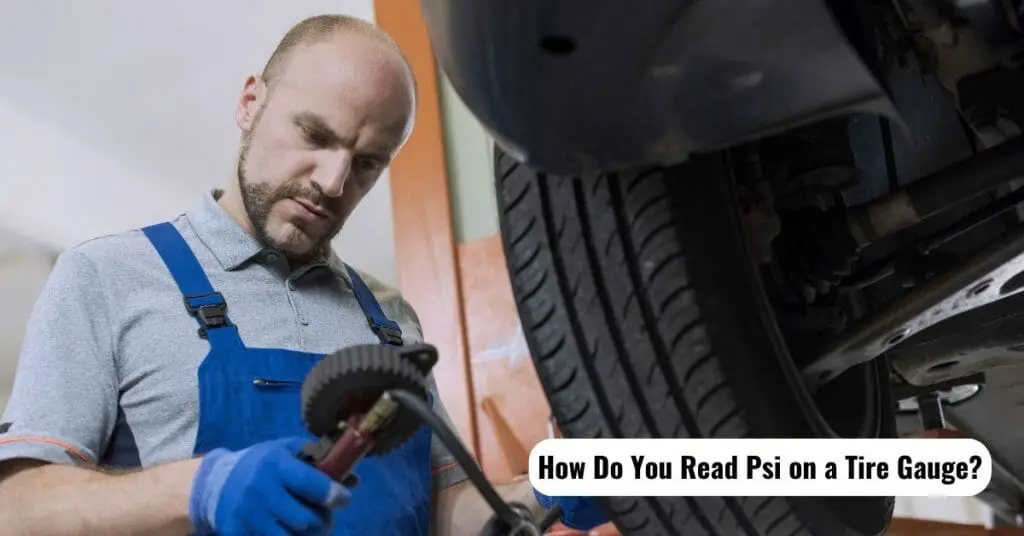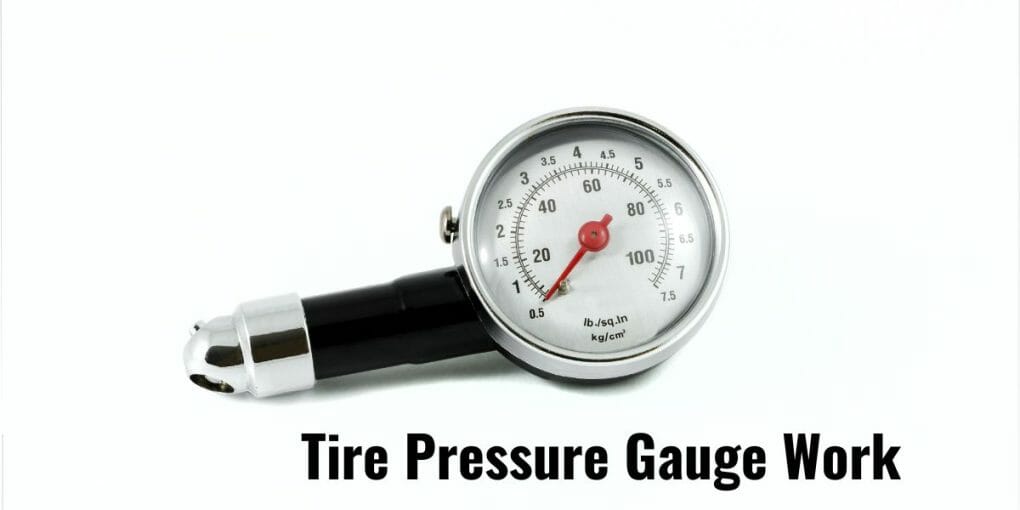Unlocking the Secrets: How Do Tire Pressure Gauges Work
Have you ever wondered how tire pressure gauges work? It’s a small device that can tell you the exact pressure of your tires, but how does it do it? Maintaining proper tire pressure is crucial for safe driving, fuel efficiency, and prolonging the life of your tires. However, without a tire pressure gauge, it’s impossible to know if your tires are inflated to the correct pressure. Tire pressure gauges come in various types, from manual to digital, but they all serve the same purpose.
In this article, we will take a closer look at how tire pressure gauges work. Whether you’re a car enthusiast or just curious about the mechanics of your vehicle, understanding how tire pressure gauges work can help you maintain your tires and ensure your safety on the road. So let’s dive in and explore the inner workings of this essential tool.
How Does it Work? Tire Pressure Gauge

Tire pressure gauges are one of the most important tools for keeping your car in good shape. They help you maintain the correct air pressure in your tires, which can extend their life and improve their performance. But how do these devices work?
Tire pressure gauges use a simple principle to measure the air pressure in a tire. They have a small metal tube that is attached to a gauge. When you press the end of the tube against the tire, the air inside the tire forces the tube open.
The amount that the tube opens is proportional to the air pressure inside the tire. Most gauges have two scales, one for metric units (kilopascals or kPa) and one for imperial units (pounds per square inch or psi). To use the gauge, simply press it against the tire and read off the value on whichever scale is appropriate for your tires. Make sure to check all four tires regularly, as uneven pressures can cause problems down the road.
How to Use a Tire Pressure Gauge
If you’re like most people, you probably don’t think about your tire pressure very often. But did you know that maintaining the correct tire pressure is one of the simplest and most effective ways to extend the life of your tires? It can also improve your gas mileage and make your car handle better.
So how do you check your tire pressure? It’s easy – all you need is a tire pressure gauge. Here’s a step-by-step guide on how to use one:
Remove the cap from the valve stem on one of your tires. You’ll see a small metal rod sticking out – this is the valve stem.
Place the tip of the tire pressure gauge onto the valve stem and press down firmly. You’ll hear a hissing sound as air escapes from the tire. Keep pressing until the gauge registers a reading.
Compare this reading to the recommended tire pressure for your vehicle (you’ll find this in your owner’s manual or on a sticker inside your driver’s door). If it’s lower than what it should be, add air to reach the proper level. If it’s higher, let some air out until it reaches the correct level.
Repeat these steps for each of your tires, including any spares that you may have in case of emergency. And that’s all there is to it! Checking and maintaining proper tire pressure is quick and easy, but it can make a big difference in how long your tires last and how well your car performs overall.
Explain How to Use a Tyre Pressure Gauge?

A tyre pressure gauge is a simple yet essential tool for keeping your tyres in good condition. Here’s how to use one: First, remove the valve cap from the tyre you wish to check.
Press the metal tip of the gauge firmly onto the valve stem and hold it there while reading the pressure. If you don’t have a digital gauge, then compare the needle on your analog gauge to the markings on its faceplate to determine the pressure. Make a note of this number.
Next, consult your vehicle’s owner’s manual or placard (usually located on the driver’s door pillar) to find out what the ideal tyre pressure should be for your particular make and model. If you can’t find this information, then 50 psi (pounds per square inch) is a safe all-around figure to aim for. If your tyres are underinflated, then use a tyre inflator to add air until you reach the desired pressure.
Conversely, if they are overinflated, then release some air by depressing the pin in the center of the valve stem with a nail or similar object. Check and adjust each tyre in turn until they are all inflated to within 3-5 psi of each other and of course, at or above the minimum specified by your car manufacturer.
The tire Pressure Gauge Not Working
If your tire pressure gauge isn’t working, it’s likely because the batteries need to be replaced. Check the manufacturer’s instructions to see how to replace the batteries. If that doesn’t solve the problem, then the gauge may need to be recalibrated.
Tire Pressure Gauge And Inflator
Tire pressure gauges are one of the most essential tools for keeping your car in good shape. They help you maintain the correct tire pressure, which is critical for both safety and fuel economy. There are two types of tire pressure gauges: digital and analog.
Digital gauges are more accurate, but they can be more expensive. Analog gauges are less expensive, but they’re not as accurate. Most tire pressure gauges have a built-in air compressor so you can inflate your tires if needed.
Some even come with a light that illuminates the area around the valve stem so you can see what you’re doing in low-light conditions.
How Does a Pressure Gauge Work
A pressure gauge is a device that measures the pressure of a fluid. The most common type of pressure gauge is the Bourdon tube, which contains a liquid or gas under pressure. The bourdon tube is connected to a pointer that moves along a scale, which indicates the pressure on the fluid in the tube.
The principle behind the operation of a pressure gauge is simple: when fluid is placed under pressure, it tends to expand. This expansion causes the bourdon tube to straighten out, which in turn pushes on the pointer and causes it to move along the scale. The amount that the pointer moves depends on how much pressure is exerted on the fluid in the tube.
Most Pressure gauges are designed so that they can measure pressures up to 100 psi (pounds per square inch). However, there are some specialty gauges that can measure pressures much higher than this. For example, tire gauges typically have a range of 0-60 psi, while blood pressure gauges typically have a range of 0-200 mmHg (millimeters of mercury).
Are Tire Pressure Gauges Accurate?
If you’re like most people, you probably check your tire pressure regularly using a tire pressure gauge. But how accurate are these gauges? It turns out that the accuracy of a tire pressure gauge can vary quite a bit.
In general, digital gauges tend to be more accurate than analog gauges. However, even digital gauges can have an accuracy of plus or minus 2 psi. So what does that mean for you?
Well, if your tire is low on air and you use a tire pressure gauge to add air, it’s possible that the gauge isn’t reading accurately and you could end up over-inflating your tires. On the other hand, if your tires are already at the correct pressure, there’s no need to worry about the accuracy of the gauge.
In short, while tire pressure gauges aren’t perfect, they’re still the best way to ensure that your tires are properly inflated. Just be sure to check the pressure in all four tires (including the spare) and keep an eye on your tread depth so you can catch any problems early on.
How Do You Read Psi on a Tire Gauge?

If you’re like most people, you probably don’t think much about the psi, or pounds per square inch, reading on your tire gauge. But if you’re a car enthusiast or just someone who wants to keep their vehicle in tip-top shape, it’s important to know how to read psi on a tire gauge properly. Here’s a quick guide:
First, check your owner’s manual to see what the recommended psi for your tires is. This number can vary depending on the make and model of your car, as well as the type of tires you have. Once you know the target psi for your tires, use a tire pressure gauge to check the current pressure.
Most tire gauges will have two different readings: one for “normal” or “cold” tires (meaning they haven’t been driven recently), and one for “hot” tires (meaning they’ve been driven within the past few hours). Make sure you’re checking the correct reading for your situation. If the current psi in your tires is lower than the recommended number, use an air compressor or hand pump to add air until it reaches the proper level.
If it’s higher than recommended, let some air out until it reaches the target number. It’s always better to err on the side of slightly too much air rather than too little – if there’s not enough air in your tires, they could overheat and burst while you’re driving. And that’s all there is to reading psi on a tire gauge!
What are the 3 Types of Tire Pressure Gauges?
There are three types of tire pressure gauges. The first is a mechanical gauge, which uses a spring-loaded mechanism to measure pressure. These gauges are generally more accurate than digital gauges, but they can be less reliable in extreme temperatures.
The second type of gauge is a digital gauge, which uses an electronic sensor to measure pressure. These gauges are generally more accurate than mechanical gauges, but they can be less reliable in extreme temperatures. The third type of gauge is a dial gauge, which uses a needle to indicate pressure on a dial. Dial gauges are the most common type of tire pressure gauge and are generally very accurate.
Frequently Ask & Questions
How does a tire pressure gauge work?
A tire pressure gauge measures the air pressure inside a tire. Most tire pressure gauges operate on the principle of the Bourdon tube. When the gauge’s nozzle is connected to the tire’s valve stem, air pressure enters the gauge, causing the Bourdon tube to straighten or bend. This movement is then converted into a pressure reading displayed on the gauge’s dial or digital screen.
Are digital tire pressure gauges more accurate than analog ones?
Digital tire pressure gauges are generally considered more accurate than analog gauges. Analog gauges rely on a needle and dial to display the pressure, which can be subjective and prone to human error when reading. On the other hand, digital gauges provide a precise numerical reading, eliminating the need for interpretation. However, both types of gauges can provide accurate readings if used correctly.
How should I use a tire pressure gauge?
To use a tire pressure gauge, start by removing the valve stem cap from the tire. Press the gauge’s nozzle onto the valve stem firmly, ensuring a tight seal. After a brief moment, the gauge will display the tire pressure reading. Make sure to hold the gauge steady until the reading stabilizes. Repeat the process for each tire and compare the readings with the manufacturer’s recommended tire pressure for your vehicle.
Can tire pressure gauges lose accuracy over time?
Like any measuring device, tire pressure gauges can lose accuracy over time due to wear and tear or mishandling. It’s important to periodically calibrate or check the accuracy of your gauge using a known standard or by comparing it with other reliable gauges. Some digital gauges may allow for calibration adjustments, while analog gauges may require professional calibration if they become significantly inaccurate.
Is it necessary to have my own tire pressure gauge?
Having your own tire pressure gauge is highly recommended. It allows you to regularly monitor and maintain proper tire pressure, which is crucial for safety, fuel efficiency, and tire longevity. Relying on gas station gauges or assuming the tire pressure is correct can be risky, as these gauges may be inaccurate or improperly calibrated. Owning your own gauge gives you control over your vehicle’s tire pressure and promotes proactive maintenance.
Conclusion
A tire pressure gauge is a device that measures the air pressure in a tire. There are two types of gauges: analogue and digital. Analogue gauges have a needle that points to a number on a dial, while digital gauges display the pressure on an LCD screen.
To use either type of gauge, you first need to remove the cap from the valve stem on your tire. Then, place the tip of the gauge onto the valve stem and press down firmly. For analogue gauges, this will cause the needle to move and indicate the pressure on the dial.
For digital gauges, this will cause the LCD screen to display the pressure. Once you have taken a reading, release the pressure from the gauge by removing it from the valve stem. If you’re checking your tires’ pressures regularly, it’s a good idea to invest in a quality gauge so that you can get accurate readings.


